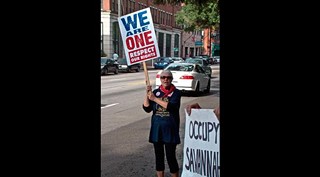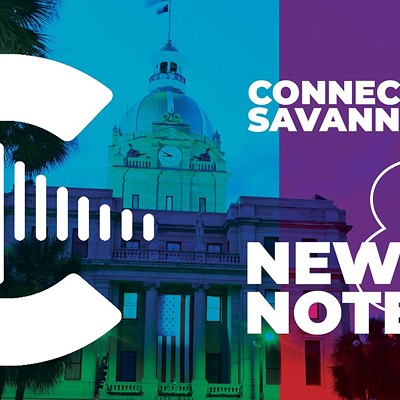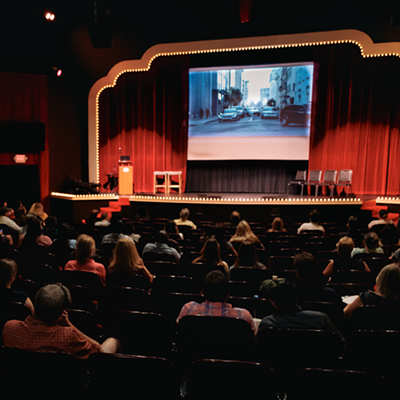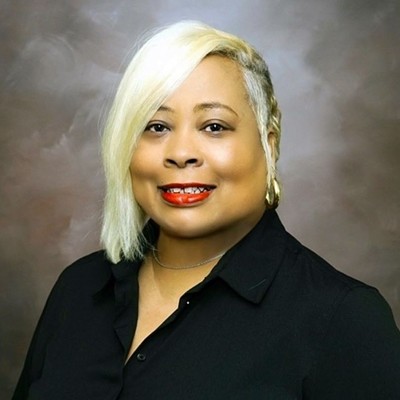It started as an idea, a conversation, a meeting of like minds, and has grown into a nationwide movement the likes of which hasn’t been seen since the Vietnam War and Civil Rights actions of the 1960s.
Occupy Wall Street was conceived by Adbusters Media Foundation, an anti–consumerist organization. On July 13, Adbusters sent out a call to action for folks who are disturbed by the corporate influence on the American political system and by the corruption exhibited by Wall Street.
The proposal was for people, beginning Sept. 17, to assemble in a public space in downtown Manhattan and, according to the Adbusters website, to “talk to each other in various physical gatherings and virtual people’s assemblies ... to zero in on what our one demand will be, a demand that awakens the imagination and, if achieved, would propel us toward the radical democracy of the future.”
Since then thousands have met and camped out in Lower Manhattan’s Zuccotti Park, tens of thousands have participated in marches and actions across New York, and more than 100,000 have shown solidarity and support in similar actions around the country. By the last count, more than 1000 American cities have organized Occupy events.
And now the Occupy movement has come to Savannah.
On Oct. 9, more than 100 people gathered in Emmet Park, on the east end of Bay Street, to show their solidarity for the Occupy Wall Street movement, and to lend their voices to a growing feeling of disenfranchisement shared by many Americans.
Phoenix Godwin, 23, an employee at a local nonprofit historic site and tourist destination, organized the event here. Godwin acknowledges that people have been drawn to the Occupy movement for a wide variety of reasons.
His primary motivation stems from his belief that money and resources from the middle and working class are being funneled upward at an accelerated rate.
“We live in a world where everything we buy is going toward centralized locations that are far away from communities, whether it is a city or a state, and then money’s not circulating back through that community,” he says.
“So it’s causing a lot of problems, and I think a lot of people feel like it’s just going to keep getting worse because politicians aren’t actually fixing it.”
Since Oct. 9th, folks young and old have “occupied” Emmet Park. At any time between 9 a.m. and dark, people young and old, white and black, gay and straight can be found holding hand–painted signs, chanting, waving at cars and having conversations on the sidewalk.
Amon Ra, a 23–year old mathematics major at Savannah State, thinks the local event and the Occupy movement as a whole will help make people more aware of problems facing the American democracy.
“People don’t realize who these politicians are, who they’re voting for, who these people are really representing. I mean, are they representing you, like you voted for, like they told you in the campaign, or are they being used for corporate greed, for these conglomerates, for these people who own, really have a chokehold on the American economy, on America period?” he asks.
“Our back is against the wall now and, I mean, the cliff is right there. We get one more big blow to this economy, that 25 million people can double easily in five years,” Ra says. “If we don’t become aware now, and take things into our own hands, we could be headed for more trouble.”
People have come and gone, but one fixture on the east end of Bay Street has been a dedicated group of retiree activists led by Phillip Meyers, a 63–year old disabled former Marine. Meyers is founder and President of R.U.F.F., Retirees United For the Future, a community affiliate of the AFL–CIO.
Members of R.U.F.F., “affectionately known as ”the Ruffians,“ according to Meyers, ”go out and hold street actions trying to raise the consciousness of the people of Savannah.”
Bad weather hasn’t dissuaded “the Ruffians” in their mission. “I’ve been here in the rain, the wind,” Meyers says. “But that don’t bother me. I want to be here!”
One of the biggest problem facing the American working class today, according to Meyers, lies in a disconnect between corporate profits and workers’ salaries.
“The truth of the matter is, look,” Meyers says, “when you get paid for a job, I don’t care how high up the rungs you go, you’re not getting paid your worth for doing that job. How do I know that? Because there’s such a thing called profit, and the corporations of the world make their profits in a number of ways. One of the ways is by paying their employees less than the value of what they produce.”
Right now the goal of the Occupy movement, in Wall Street and in Savannah, is to gather folks together to raise awareness of challenges the American working and middle class face, and to start generating ideas and solutions to those challenges.
When asked how long he thinks Occupy Savannah will continue their actions in Emmet Park, Godwin responds, “As long as we feel we need to be here.”



























